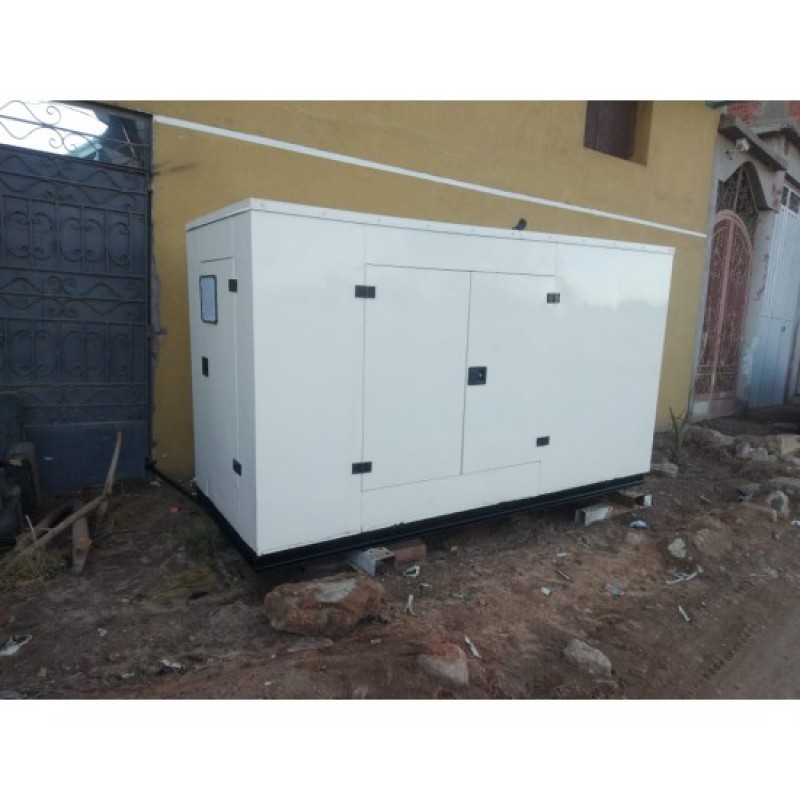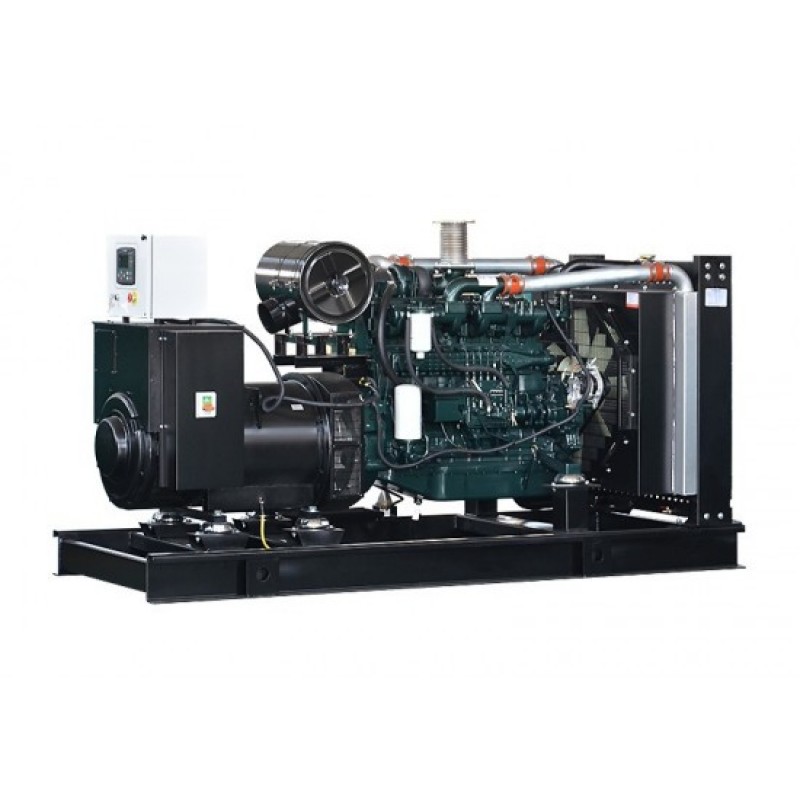
تسجيل الدخول أو إنشاء حساب
Closeالزبون العائد
أنا زبون عائد
تسجيل الدخول أو إنشاء حساب
Closeتسجيل حساب
إذا كان لديك بالفعل حساب معنا ، يرجى تسجيل الدخول على نموذج تسجيل الدخول.
لقد تم انشاء الحساب بنجاح !
شكراً على التسجيل في موقع Egyptlifts!
سيتم إعلامك عن طريق البريد الإلكتروني عندما يتم تفعيل حسابك من قبل فريق عمل الموقع.
إذا كانت لديك استفسارات عن نظام عمل الموقع، يرجى الاتصال بفريق عمل الموقع.
خروج
تم تسجيل خروجك من الحساب. يمكنك مغادرة الموقع بأمان
سلة التسوق الخاصة بك قد تم حفظها، الطلبات الموجودة في السلة سوف يتم استعادتها كلما قمت بتسجيل الدخول إلى حسابك.
مولد كهرباء لتصنيع المصعد
مولد كهرباء لتصنيع المصعد
.jpg)
يلعب مولد كهرباء لتصنيع المصعد دورًا حيويًا في تأمين الطاقة اللازمة
لتشغيل المصعد بطريقة مستقلة. يهدف هذا المولد إلى توفير مصدر طاقة موثوق به
وفعّال للمصاعد، مما يعزز ليس فقط كفاءة التشغيل ولكن أيضًا يلبي معايير الاستدامة
البيئية. (ليفت)
مولد كهرباء لتصنيع المصعد
يُعد مولد الكهرباء المخصص لتشغيل أسانسير جزءًا أساسيًا في نظام النقل العمودي الحديث. يقوم هذا الجهاز بتحويل الطاقة الميكانيكية الناتجة عن حركة اسانسير إلى طاقة كهربائية قابلة للاستخدام. يتميز هذا المولد بتصميم دقيق يتيح له أداءً فائق الكفاءة، حيث يعمل على تحويل الطاقة بشكل فوري وفعال. يقوم المولد بتوليد الكهرباء التي تلبي احتياجات تشغيل اسنسير بشكل ذكي، حيث يتم توجيه هذه الطاقة لتشغيل المحركات والأنظمة الكهربائية ذات الصلة. يعكس تصميم مولد الكهرباء هذا التفرغ لتلبية احتياجات الاسانسير، والتي تتطلب مصادر طاقة متقدمة ومستدامة لضمان حركة رفع وانخفاض سلسة وفعالة. (الاسناسير)
التصميم الأساسي لمولد كهرباء لتصنيع المصعد
يتمتع مولد الكهرباء المخصص لتشغيل الأسانسير بتصميم هندسي متقدم يتسم
بالفعالية والأداء المتميز. يعتمد تصميم المولد على مفاهيم الهندسة الدقيقة
والتكنولوجيا الحديثة لضمان استفادة قصوى من الطاقة الميكانيكية الناتجة عن حركة
المصعد. يتألف المولد عادةً من محور دوران متين يتصل بميكانيزم متطور يحول الحركة
الدورانية إلى طاقة كهربائية. يستخدم ملف اللفات والمغناطيس في توليد التيار
الكهربائي الذي يغذي نظام مصاعد بالطاقة اللازمة.
تصميم المولد يهدف إلى تحقيق أقصى كفاءة في تحويل الطاقة وتوفير كمية
كبيرة من الكهرباء بأقل قدر من الفاقد. يُضاف إلى ذلك، يتم تجهيز المولد بتقنيات
تحكم متقدمة تسهم في توفير الطاقة حسب الحاجة، مما يعزز استدامة التشغيل ويقلل من
الاستهلاك غير الضروري. تتمثل الفعالية في تصميم المولد في قدرته على تلبية
متطلبات تشغيل مصعد بكفاءة عالية وتحت أي ظروف، مما يجعله عنصراً أساسياً في
نظام الطاقة الكامل للمصعد.
الفوائد البيئية لمولد كهرباء لتصنيع المصعد
تعتبر استخدام مولد الكهرباء في تشغيل المصاعد ليس فقط استثمارًا في تكنولوجيا الطاقة، ولكن أيضًا إسهامًا فعّالًا في الحفاظ على البيئة. تعتمد فوائد هذا المولد على توظيفه لمصادر طاقة متجددة ونظيفة، مما يسهم في تقليل الأثر البيئي الناتج عن تشغيل المصاعد التقليدية التي تعتمد على مصادر طاقة تقليدية. (للمصاعد)
أحد الفوائد البيئية الرئيسية هي تقليل انبعاثات الكربون، حيث يُستخدم
المولد لتحويل الحركة الميكانيكية إلى طاقة كهربائية بشكل فعّال وباستفادة من
مصادر الطاقة المتجددة. بفضل هذا التوجه نحو الاستدامة، يُمكن تحسين جودة الهواء
والمساهمة في جهود تقليل التأثير البيئي.
بالإضافة إلى ذلك، يساهم استخدام مولد الكهرباء في تشغيل المصعد في تقليل الاعتماد على مصادر الطاقة التقليدية التي تتسبب في استنزاف الموارد الطبيعية وتلوث البيئة. بالتالي، يشكل هذا الابتكار خطوة إيجابية نحو تحقيق توازن بين الاحتياجات الحديثة للنقل الرأسي والمحافظة على صحة ونظافة البيئة. (قطع غيار مصاعد حلمية الزيتون)
التقنيات المستخدمة في مولد الكهرباء لتشغيل المصعد
يتميز مولد الكهرباء الذي يعمل على تشغيل المصعد بتبني تقنيات حديثة
تجمع بين الابتكار والكفاءة العالية. يعتمد تصميم المولد على استخدام أحدث
التقنيات في مجال تحويل الطاقة لضمان أداء متميز. تشمل هذه التقنيات:
- تقنية المحركات الكهربائية الفعّالة: يتضمن التصميم استخدام محركات كهربائية فعالة تقلل من فاقد الطاقة وتحسن كفاءة تحويل الحركة إلى طاقة كهربائية (مولد كهرباء لتصنيع المصعد). (مصاعد مستعملة للبيع في مصر)
- أنظمة التحكم الذكي: يعتمد
المولد على أنظمة تحكم ذكية تتيح التحكم الدقيق في إنتاج وتوزيع الطاقة، مما
يسهم في تحسين كفاءة النظام بشكل عام.
- تقنيات تخزين الطاقة: يتضمن التصميم استخدام تقنيات تخزين الطاقة لضمان استدامة التشغيل وتوفير الطاقة في حالات الطوارئ أو التقليل من تقلبات استهلاك الطاقة. (مصاعد هيدروليك)
- المستشعرات وأنظمة الرصد: يُدمج
المولد مع مستشعرات ذكية وأنظمة رصد للحفاظ على أداء مستقر وضمان الصيانة
الوقائية (مولد كهرباء لتصنيع المصعد).
- تكامل مع مصادر الطاقة المتجددة: يتيح تصميم المولد تكامله بسهولة مع مصادر الطاقة المتجددة، مثل الطاقة الشمسية، لتعزيز استدامة التشغيل. (مصعد هيدروليك)
تجمع هذه التقنيات المتطورة معًا لخلق نظام يتسم بالكفاءة والاستدامة،
مما يعزز تشغيل المصعد بكفاءة عالية ويسهم في تقليل الأثر البيئي.
أنواع مولدات الكهرباء المستخدمة في المصاعد
تعتبر مولدات الكهرباء حيوية في تشغيل المصاعد، حيث يتيح لها الاعتماد على مصدر طاقة داخلي في حالات انقطاع التيار الكهربائي الرئيسي. هناك عدة أنواع من مولدات الكهرباء تستخدم في هذا السياق، وتتميز كل نوع بخصائصه الفريدة وقدرته على تلبية احتياجات تشغيل المصعد. (مقاسات الاسانسير)
- مولدات الدينامو: تعتمد على مبدأ تحويل الحركة الميكانيكية
إلى طاقة كهربائية باستخدام المغناطيس. يتم تثبيت هذا النوع من المولدات عادة
في الآليات الرئيسية للمصعد ويتحرك بشكل مباشر بفعل حركة المصعد.
- مولدات الديزل: تستخدم في المصاعد الكبيرة أو في المناطق
التي قد تواجه انقطاعات كهربائية طويلة. يتم تشغيل مولدات الديزل بواسطة
محركات ديزل تحفز المولد لتوليد الكهرباء (مولد كهرباء لتصنيع المصعد).
- مولدات الطاقة الشمسية: تعتمد على الطاقة الشمسية لتوليد الكهرباء. يتم تثبيت اللوحات الشمسية على سطح المصعد لاستيفاء الطاقة الشمسية وتحويلها إلى طاقة كهربائية. (اسعار الاسانسيرات)
- مولدات البطاريات: تعمل على تخزين الطاقة أثناء تشغيل المصعد
وتوفيرها في حالة انقطاع التيار. تعتبر هذه البطاريات جزءًا مهمًا من نظام
الطوارئ للمصاعد (مولد كهرباء لتصنيع المصعد).
- مولدات الطاقة الإنسانية: تستفيد من حركة المصعد نفسه لتوليد الكهرباء، حيث يتم تحويل الحركة الميكانيكية الناجمة عن حركة المصعد إلى طاقة كهربائية. (رموز اعطال المصاعد)
يتيح اختيار النوع المناسب من مولد الكهرباء للمصعد تحقيق أقصى كفاءة
في التشغيل وضمان استمراريته حتى في ظروف التيار الكهربائي المتقطع.
التحكم الآلي والمستشعرات في تحسين أداء مولد المصعد
يعد التحكم الآلي واستخدام المستشعرات من الجوانب الحديثة التي تسهم
بشكل كبير في تحسين أداء مولدات الكهرباء المستخدمة في تشغيل المصاعد. تمثل هذه
التقنيات الحديثة نقلة نوعية في فعالية توليد الطاقة وتحسين استجابة المصعد
للتغييرات في الحمل والبيئة.
1. التحكم الآلي: يعتمد التحكم الآلي على استخدام أنظمة الكمبيوتر والبرمجيات المتطورة لرصد وضبط أداء مولد المصعد بشكل دقيق. يمكن للأنظمة الآلية التكامل مع الأجهزة الحديثة لتوفير تحكم ديناميكي يعتمد على الظروف الفعلية لتحسين كفاءة استهلاك الطاقة وتقليل التكاليف. (افضل شركات المصاعد)
2.
المستشعرات: تعمل
المستشعرات على رصد وقياس مختلف المتغيرات في بيئة المصعد، مثل الحمل وسرعة
الحركة. باستخدام هذه المعلومات، يمكن للنظام التلقائي تعديل إنتاج المولد بشكل
فعال لتلبية احتياجات المصعد بدقة. مستشعرات الضغط والتيار الكهربائي تسهم في ضبط
الطاقة المولدة وفقًا لمتطلبات التشغيل (مولد كهرباء لتصنيع المصعد).
3. تحسين استجابة المصعد: بفضل التحكم الآلي والمستشعرات، يمكن تحسين استجابة المصعد بشكل كبير. يمكن للنظام التلقائي التكيف السريع مع التغييرات في الحمل أو السرعة، مما يضمن تشغيل سلس وفعال. (تركيب مصاعد)
4.
تقليل
فاقد الطاقة: عندما
يتم استخدام التحكم الآلي والمستشعرات بشكل فعال، يمكن تحقيق توزيع أفضل للطاقة
وتجنب فاقد الطاقة غير الضروري. هذا يسهم في تقليل تكلفة التشغيل وتحسين كفاءة
النظام.
5. التكامل مع أنظمة الطوارئ: يمكن أيضًا تكامل نظام التحكم الآلي مع أنظمة الطوارئ لضمان تشغيل المصعد بكفاءة في حالات الطوارئ، مما يعزز سلامة الركاب. (صيانة مصاعد)
باستخدام التحكم الآلي والمستشعرات، يتم تحسين أداء مولد المصعد بشكل
فعال، مما يسهم في توفير الطاقة وضمان استمرارية التشغيل بشكل مستدام.
الأمان في مولدات الكهرباء للمصاعد
تُعتبر مولدات الكهرباء للمصاعد جزءًا حيويًا من نظام التشغيل، ولضمان
سلامة الركاب واستمرارية التشغيل، يُولَي الاهتمام بالجوانب الأمانية أهمية كبيرة.
يتعلق الأمان في مولدات الكهرباء للمصاعد بعدة جوانب مهمة:
1.
حماية من
التيار الزائد: يجب
تجهيز مولدات الكهرباء بأنظمة تحكم تلقائي تكتشف التيار الزائد وتتخذ إجراءات
فورية لتجنب التلف والحماية من حوادث التيار الزائد.
2.
نظام
حماية ضد الصدمات الكهربائية: يتطلب
الأمان الكهربائي في مولدات المصاعد توفير نظام فعال للحماية ضد الصدمات
الكهربائية، ويشمل ذلك استخدام عوازل فعّالة وتأريض كافٍ لضمان سلامة الأفراد
والمعدات (مولد كهرباء لتصنيع المصعد).
3.
تكنولوجيا
الإيقاف التلقائي: يجب
تجهيز المولدات بتقنيات إيقاف تلقائي تعمل في حالات الطوارئ، مثل انقطاع التيار
الكهربائي الرئيسي أو انخفاض الجهد، لمنع أي تلف أو حادث.
4.
أنظمة
الإشعار والإنذار: ينبغي أن
تتميز مولدات الكهرباء بأنظمة إشعار وإنذار فعّالة تُعلم المشغّلين بأي مشاكل قد
تطرأ، سواء كان ذلك من خلال أنظمة تحكم آلي أو وسائل إشعار أخرى.
5.
اختبارات
السلامة الدورية: ينبغي
إجراء اختبارات دورية للمولدات للتحقق من أدائها والتأكد من تشغيلها السليم في
حالات الطوارئ. تعتبر هذه الاختبارات جزءًا أساسيًا من برامج الصيانة لضمان الأمان.
6.
مقاومة
للظروف البيئية: يجب أن
تكون مولدات الكهرباء مقاومة للظروف البيئية المتغيرة، مثل درجات الحرارة المرتفعة
أو المنخفضة، والرطوبة، والغبار، لضمان استمرارية الأداء في جميع الظروف.
7.
تدريب
الفنيين: يجب أن
يكون الفنيون المعنيون بصيانة وتشغيل مولدات الكهرباء مدربين تدريبًا جيدًا على
جميع جوانب الأمان والتشغيل الآمن.
تتجسد أهمية هذه الجوانب الأمانية في ضمان عمل المصاعد بشكل مستقر
وآمن، وتوفير حلول فورية في حالات الطوارئ، مما يضمن سلامة المستخدمين واستدامة
عملية المصعد.
التحديات التقنية في تصميم مولدات الكهرباء للمصاعد
تصميم مولدات الكهرباء لتشغيل المصاعد يواجه العديد من التحديات
التقنية التي تتطلب ابتكارًا وتطويرًا مستمرًا. إليك نظرة عن كثب على بعض هذه
التحديات:
1. الكفاءة في تحول الطاقة:
مولد 25 ك.ف.أ - إيجار
$11.00
مولد 25 ك.ف.أ بكابينة 8 ساعات في اليومبيركنز / ستامفورد8000 جنيه شهرياً (باستثناء ضريبة القيمة المضافة)الإيجار غير شامل النقل والضرائب على الطرق- شامل الصيانة الدورية (زيت / فلاتر)تأمين شهر واحد قبل التسليم ليفت – ..
مولد 45 ك.ف.أ - إيجار
$12.00
مولد 45 ك.ف.أ بكابينة 8 ساعات في اليومبيركنز / ستامفورد9000 جنيه شهرياً (باستثناء ضريبة القيمة المضافة)الإيجار غير شامل النقل والضرائب على الطرق- شامل الصيانة الدورية (زيت / فلاتر)تأمين شهر واحد قبل التسليم ليفت – ..
مولد 50 ك.ف.أ - إيجار
$14.00
مولد 50 ك.ف.أ بكابينة 8 ساعات في اليومبيركنز / ستامفورد10،000 جنيه شهرياً (باستثناء ضريبة القيمة المضافة)الإيجار غير شامل النقل والضرائب على الطرق- شامل الصيانة الدورية (زيت / فلاتر)تأمين شهر واحد قبل التسليم ليفت –&nbs..
مولد 60 ك.ف.أ - إيجار
$15.00
مولد 60 ك.ف.أ بكابينة 8 ساعات في اليومبيركنز / ستامفورد11،000 جنيه شهرياً (باستثناء ضريبة القيمة المضافة)الإيجار غير شامل النقل والضرائب على الطرق- شامل الصيانة الدورية (زيت / فلاتر)تأمين شهر واحد قبل التسليم ليفت –&nbs..
مولد كامنز - ستامفورد - 48 ك ف أ
$302.00
G45XF : الموديلالمحرك : كامنز مولد التيار : ستامفوردلوحة التحكم : ديب سيالقدرة :48/45 ك ف أسعة الخزان الملحق 170 لترمصاعد ليفت – أسانسير- اسانسير - اسنسير – الاسانسير - الاسناسير –&nbs..
مولد كامنز- ستامفورد - 21 ك ف أ
$216.00
G20XF : الموديلالمحرك : كامنز مولد التيار : ستامفوردلوحة التحكم : ديب سيالقدرة :21/20 ك ف أسعة الخزان الملحق 130 لتر ليفت – أسانسير- اسانسير - اسنسير – الاسانسير - الاسناسير – الأ..


